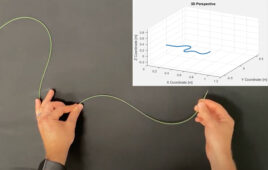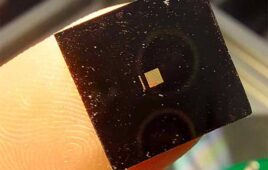
Rice University graduate student Matthew Sapp tests how hypoxia affects heart valve tissue. [Image courtesy of Rice University]
The findings surprised the Rice bioengineers, led by professor Jane Grande-Allen, who used both physical and computer models of heart valves in their study. They custom-designed bioreactors that replicated certain conditions inside the body and gradually starved aortic and mitral valve tissues of oxygen.
Stressed aortic valves saw angiogenesis (blood vessel formation), Grande-Allen explained in a Rice news release. “That’s accompanied by mineralization and then an osteogenic, or bone-like, change,” Grande-Allen said.
“The mitral valve is different,” Grande-Allen said. “Myxomatous valves tend to become thick and spongy and more like cartilage, which doesn’t have blood vessels in it. It appears to transform into a tissue that perhaps just has better oxygen diffusion characteristics.”
Grande-Allen hopes the insights her team is gathering could someday result in better ways to repair or replace damaged heart valves.
The findings also seem to provide another example of the difference between the three-leaflet aortic valve, which is between the heart’s left ventricle and the aorta, and the two-leaflet mitral valve, which is between the heart’s left ventricle and left atrium.
Medical device companies in recent years have enjoyed success with aortic valve replacements delivered via catheter, with Edwards Lifesciences and Medtronic presently dominating the U.S. market for TAVR. The industry appears to view transcatheter mitral valve replacement as the next big thing, with companies including Edwards, Medtronic and Abbott Labs shelling out hundreds of millions of dollars to acquire young companies with new technologies.
Industry experts, however, have pointed out that the physical differences between the two valves present new challenges when it comes to transcatheter mitral valve development. The Rice University researchers’ latest findings provide another example of the contrast between the two valves.
Grande-Allen also has some thoughts on why heart valves in older adults still have living cells, even though they no longer have a blood vessel supply as they did when they were younger.
“We speculated that oxygen is infusing the tissue in vivo, permeating it as the leaflets move and stretch. This reduces the need for blood vessels within the leaflets. Now we’re starting to look at that in more detail,” Grande-Allen said.
[Want to stay more on top of MDO content? Subscribe to our weekly e-newsletter.]




